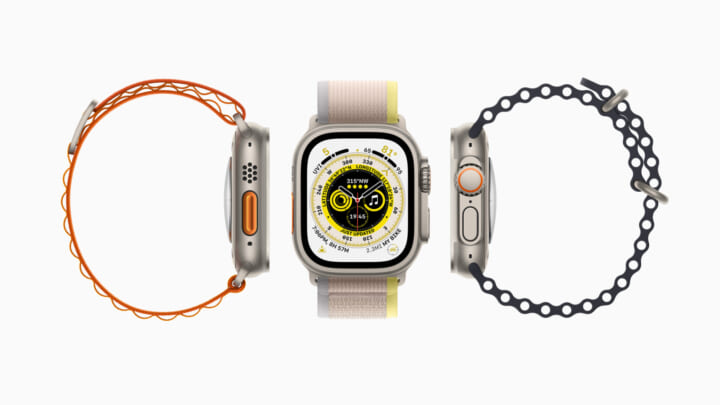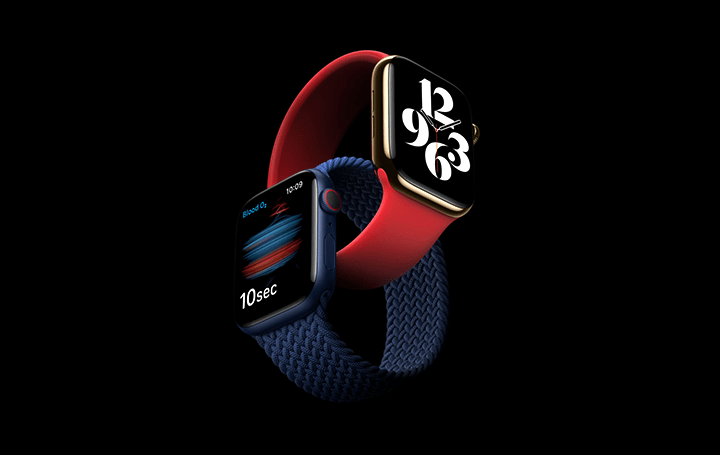INTERVIEW | テクノロジー / プロダクト
2024.10.22 19:05
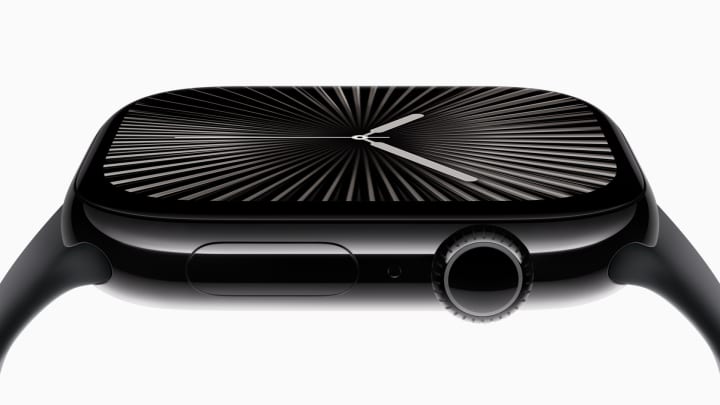
On September 9, 2024, the latest Apple Watch Series 10 was unveiled. Coincidentally, this was the same date that the first Apple Watch was announced 10 years ago. Over the past decade, Apple Watch has not only pursued miniaturization and functional expansion but has also addressed the more fundamental question of how to enrich users’ daily lives. The newly announced “Apple Watch Series 10″ is the culmination of these efforts.
This 10th version of Apple Watch features a significantly evolved display, which is the core of the product, and further refinement in thinness and lightness – crucial aspects for a wearable device. The seamless integration of hardware and software, often described as “Apple-like,” has also taken a step forward.
We spoke with two representatives from Apple’s Design Studio: Alan Dye, Head of Human Interface Design, familiar to our readers. The other is Molly Anderson, Head of Industrial Design. Eric Jue, Director of Apple Watch Product Marketing, also joined the interview.
>>日本語テキスト
Bigger and Brighter Display
Eric Jue, Director of Apple Watch Product Marketing, reflects on the 10 years since the first Apple Watch: “We announced Series 10 exactly 10 years from the day we unveiled the very first Apple Watch. Over these 10 years, we’ve continuously added innovative features with significant impact to our users each year. At this point, the design and functionality of Apple Watch are unparalleled. We believe we’ve literally been redefining the state-of-the-art in watchmaking year after year.”
So how has this year’s Apple Watch, the Series 10, redefined the Apple Watch? One of the most notable evolutions of Series 10 is its display. Alan Dye, Head of Human Interface Design, explains this evolution in detail:
“Series 10 features the largest and brightest display we’ve ever made for the watch. In fact, it’s slightly larger than the Ultra. During the development of Ultra, we realized how much users benefited from having a larger screen area and improved glanceability. We wanted to bring this experience to Series 10 and make it available to more of our customers.”
When you compare Series 10 with previous Apple Watches, you’ll be surprised by the difference in screen size. Since its introduction, Apple Watch has always been offered in two case sizes. The case sizes for Series 10 are 42mm and 46mm. Interestingly, the 42mm size, which is now the smaller model, was the larger model size for the first Apple Watch 10 years ago. Moreover, even when comparing the 42mm model of Series 1 from 10 years ago with the 42mm model of Series 10, the screen of Series 10 is significantly larger.
Alan Dye explains, “The display of the first Apple Watch was rectilinear. To integrate the straight edges of the display, all screen designs, including the watch face, had a black background on the first Apple Watch. In contrast, the current Apple Watch has beautifully rounded corners, allowing us to display information right up to the very edge of the screen.”
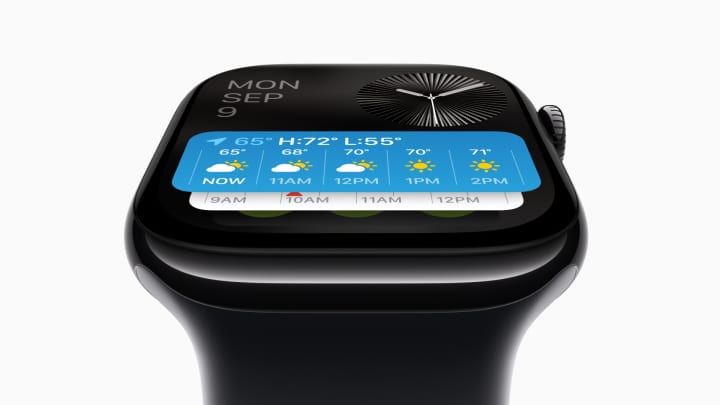
Furthermore, the latest display is a newly developed “wide-angle OLED display,” which increases screen brightness by 40% when viewed from an angle, meaning the display is clearer even when viewed from the side.
Dye continues to explain that the always-on display has also been greatly improved. Recent iPhones and Apple Watches switch to an “always-on display mode” that dims the screen slightly for power saving when not in use. In this mode, not only is the screen darker, but the screen refresh rate is also reduced to save power. However, in Series 10, this refresh rate has been significantly increased to once per second. This has made it possible to create watch faces where the second hand doesn’t disappear even in power-saving display (currently, only Reflection, Flux and Activity Digital faces support this).
“Finally, we can display the second hand even on the always-on display. You can now get all the information at a glance without having to raise your wrist. This is a very important advancement for us, as we also value the watch aspect of this product,” Dye emphasizes. He says it’s one of the milestones in the development of Apple Watch as a timepiece, which has continued for 10 years.
The Immense Trial and Error Behind 1mm Thinness
The display evolution is just the tip of the iceberg among the many evolutions of Apple Watch Series 10. Molly Anderson from the Industrial Design team explains another important feature of Series 10 – its thinness and lightness:
“Series 10 was designed to be the thinnest and lightest Apple Watch yet. Our challenge was to achieve this goal without compromising on functionality or battery life. Series 10 is 1mm thinner than Series 9. While 1mm might sound like a small number, for a small device like Apple Watch, this is a significant advancement.”
This thinning has also greatly contributed to improving the wearing comfort.
“We made an incredible number of models to find the right feel and balance for the product. It’s a matter of balance, and with weight too, it’s not just about being light. One thing we’ve been obsessed with for years, even back to Series 3 and certainly with Ultra, is making sure that when you’re wearing a suit or shirt, the cuff can slide smoothly over the watch. This is crucial in making the watch easy to wear and feel like a part of your body. The thinness of Series 10 is a significant advantage in this regard as well.”
Eric Jue adds about the technical challenges behind this thinning:
“Many people might think of design, especially industrial design, as just the exterior of the product – the parts people touch and feel. But it’s important to remember that we pay just as much attention to the design of each internal component. To achieve this 1mm reduction in thickness, we had to redesign every component module inside the Apple Watch.”
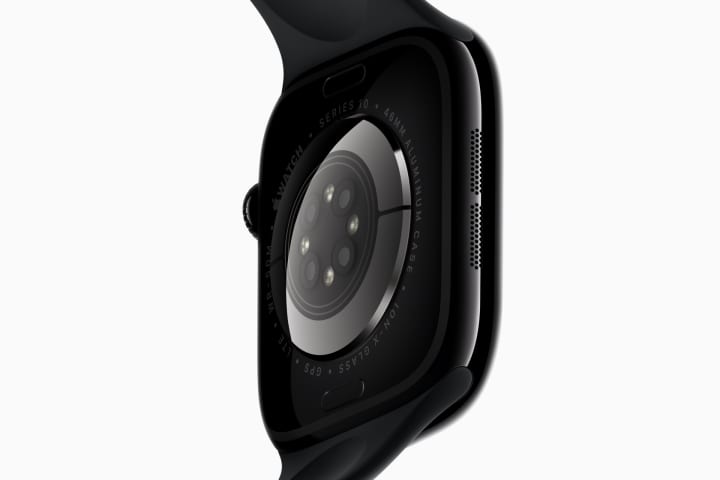
Although there’s hardly any noticeable difference when comparing it side by side with the previous model, the back of the device has undergone a major redesign.
“Series 10 adopts an all-metal enclosure. This was inspired by the tradition and craftsmanship of watchmaking. To achieve this, we had to integrate the entire cellular antenna system into the back of the case. It was a complex task, but we’re proud that we were able to realize this integrated metal enclosure while maintaining 50-meter water resistance,” Anderson explains.
The back of previous Apple Watches used zirconia (a type of artificial gemstone) which combined high strength, durability, and aesthetics, “because it was a material that allowed radio waves to pass through,” Anderson adds.
New coloring methods and material challenges have also been undertaken. A new “Jet Black” model with a beautiful glossy black finish has been added to the aluminum models.
“This is a custom process we originally developed for iPhone 7, which we’ve reinvented for Series 10,” Anderson explains. It’s said to be created through a 30-step anodization process.
On the other hand, the high-end model, provided separately from the aluminum model, has adopted polished titanium instead of the previous stainless steel.
“Titanium has a long tradition in watchmaking. It’s lighter than stainless steel and more scratch-resistant,” Anderson says.
Evolving Customizable Bands and Watch Faces for Personal Expression
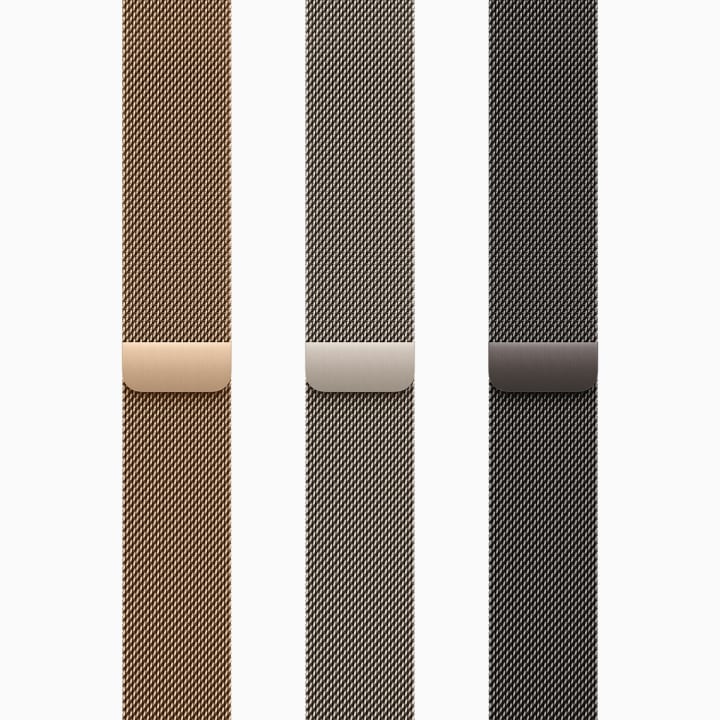
While Apple Watch is a mass-produced product used by hundreds of millions of people worldwide, it’s characterized by the ability for each individual to express their uniqueness through interchangeable bands and switchable watch faces.
“Apple Watch is the most personal product, and it’s a representation of you and your style. That’s why being able to easily swap bands and change faces to match the bands is as important as the design of the product itself. For Series 10, we’ve reintroduced the link bracelet band to match the new titanium colors.”
On the other hand, maintaining backward compatibility with previously offered bands while enlarging the body size was also a big challenge.
“Bands from previous models can be used with Series 10. We understand how important it is for customers who have been using certain bands for years to continue wearing and enjoying them. So we spare no effort in ensuring this compatibility.”
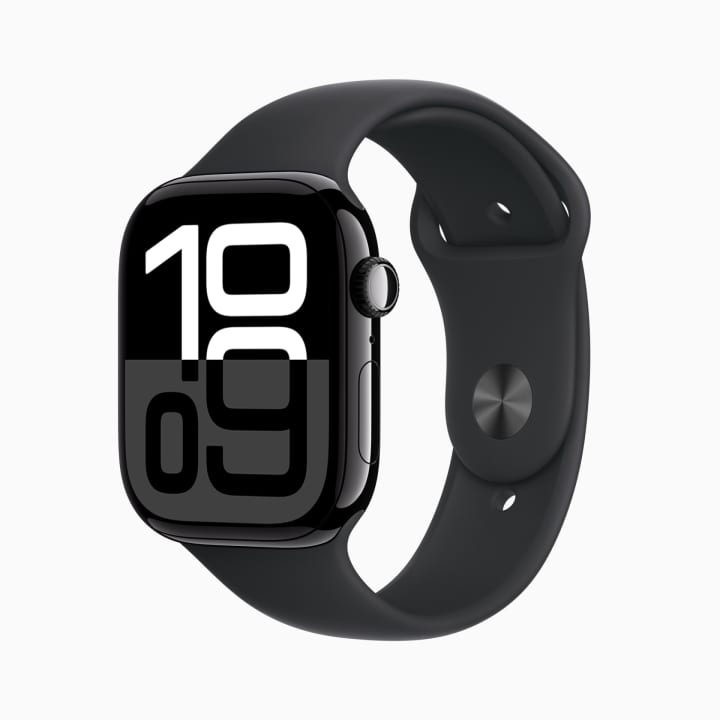
Two new watch faces were also developed with Series 10 in mind to allow users to enjoy fresh differences on the display.
One is the digital watch face called Flux. It’s a watch face that displays the current time numbers across the entire screen, with a new background color gradually added every second, changing to a new background color after one minute.
“We utilized the new display to ensure that the numbers changing every minute of the day are perfectly drawn along the rounded corners of the display. We also created 5,000 to 6,000 different color combination variations for each minute of the day,” Dye explains. In fact, the typeface used for the numbers was specially created for this watch face.
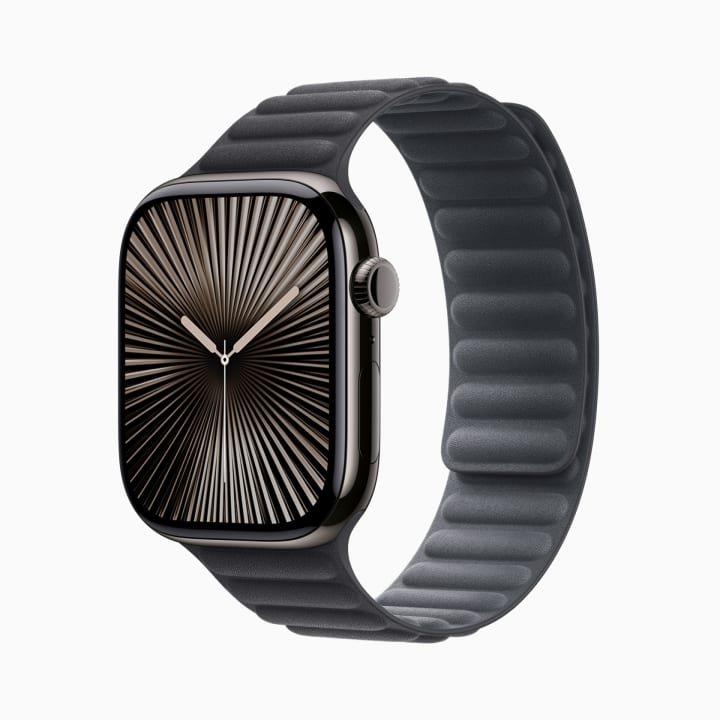
However, the watch face that’s being prominently featured as the new face of Series 10 is called “Reflections.” Anderson explains that this is a watch face that digitally reinterprets the guilloche engraving traditionally used in luxury watches.
“In designing Apple Watch Series 10, we focused on balancing two elements: respect for traditional watchmaking and the use of cutting-edge digital technology. We particularly focused on the guilloche pattern on the watch face. This is a decorative pattern often seen in luxury watches. Initially, we considered a classical design that looked as if it was made with physical engraving tools, just like traditional watches.
However, as we experimented with various prototypes using digital technology, we discovered new possibilities. We used the gyroscope built into the Apple Watch to simulate the movement of light on the watch face. As a result, we found that a softer, more curved pattern that couldn’t be achieved with traditional watches created the most beautiful effect.
This process could be called ‘digital etching.’ By using digital technology, we were able to control the reflection and movement of light freely, unbound by physical constraints.”
Dye adds about the subtle considerations in this new design:
“We’ve also made subtle changes to the pattern. We change the reflections ever so slightly when your wrist is down, because the second hand reads better that way. It might seem like a minor change, but it’s a very important element when considering usability.”
Tradition and Innovation in the 10th Year
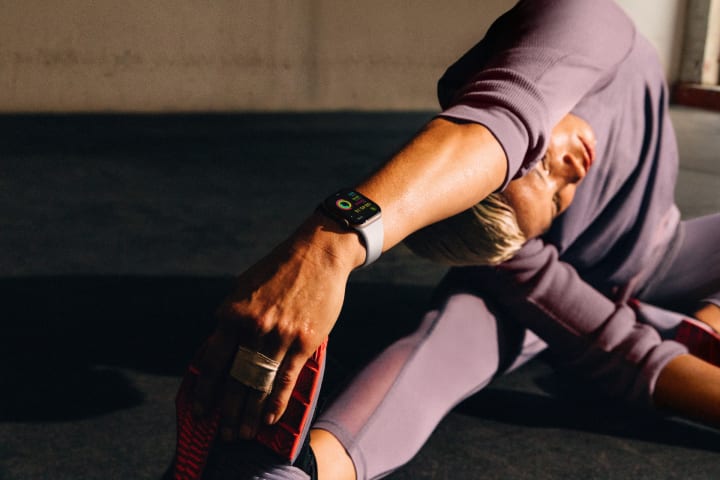
What’s surprising about Apple Watch is that even in the watch face designs that are added a couple each year, such deep levels of contemplation are repeated. How has Apple Watch evolved through this astonishing level of contemplation continued for 10 years?
“Apple Watch’s 10-year journey is a history of continuous innovation. Every year, we’ve added new features and expanded the possibilities of what a watch can be,” Jue says.
“For example, consider the ‘Activity Rings’ feature. This feature displays the amount of activity in three simple rings. However, this simplicity has conversely captured the hearts of many people and has become a symbol for creating healthy habits around the world. Closing all the rings every day has become a daily routine for many people.”
“Also, the cellular function introduced with Apple Watch Series 3 brought about a big change. With this function, you can make phone calls and exchange messages with just the Apple Watch, without carrying your iPhone. You can maintain a state of constant contact even when walking, running, or doing a bit of shopping.”
When Series 3 was announced, cellular models that could communicate on their own had a red circle added inside the Digital Crown (winding crown) to emphasize this feature. This followed the tradition of luxury watches indicating special editions or features with colored crowns. However, from Series 10, this red circle on the crown has been removed. “We felt that users now fully understand the cellular capability and recognize its importance, so there was no longer a need to explicitly indicate it,” Anderson says.

Recent Apple Watches have seen particularly significant evolution in functions for maintaining health and protecting life.
The first Apple Watch 10 years ago had the heart rate sensor and the Activity rings feature.
Now, it can acquire a wide range of health data, including ECG measurement, blood oxygen level measurement (feature not available in the US at the moment of writing) , and wrist temperature measurement for women’s health management. Recently, the Vitals app that analyze overnight health metrics has also been added.
Furthermore, functions to save people’s lives such as “Emergency SOS, Fall Detection, and Crash Detection” have been added over the years, and it is said that there are numerous reports every year of these functions actually saving lives.
It seems that Apple Watch has now transcended the framework of mere watches or gadgets and is becoming an indispensable presence in many people’s lives as a tool for health management, ensuring safety, and communication.![]()







